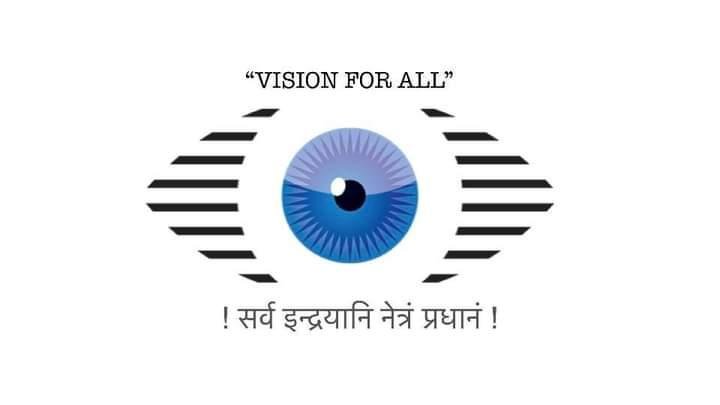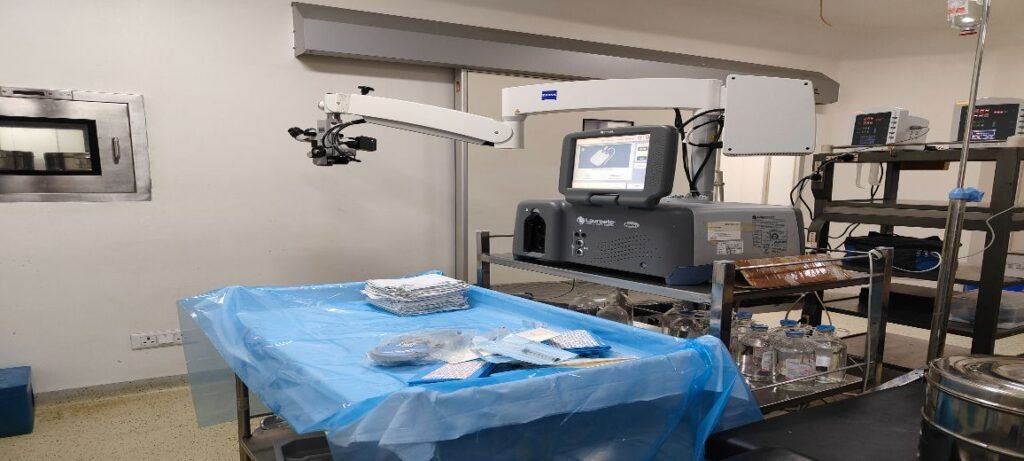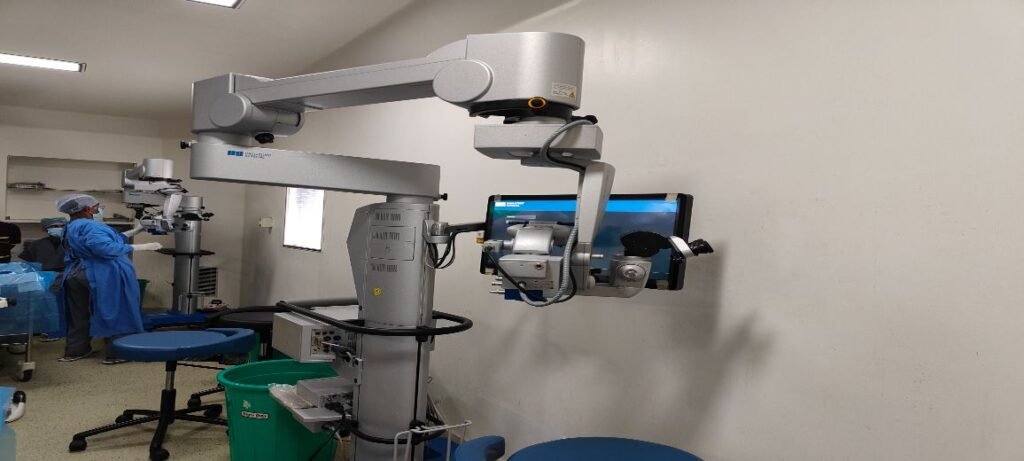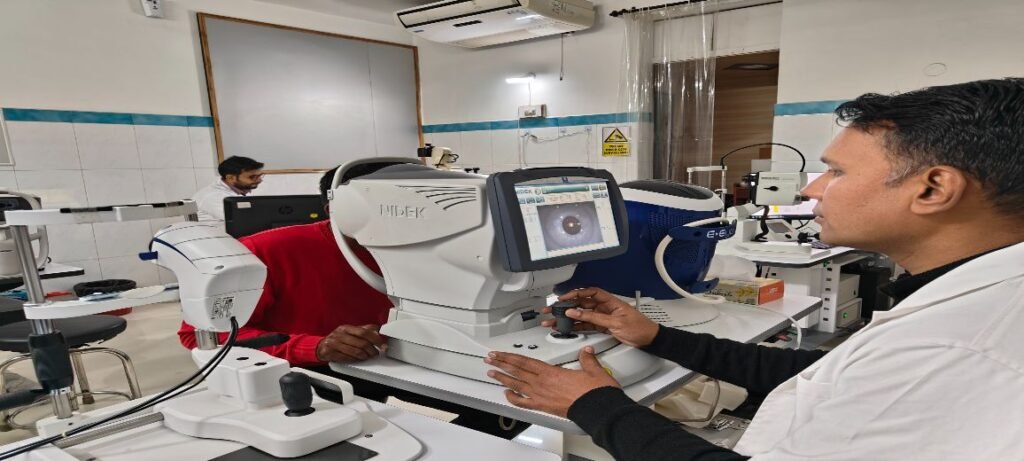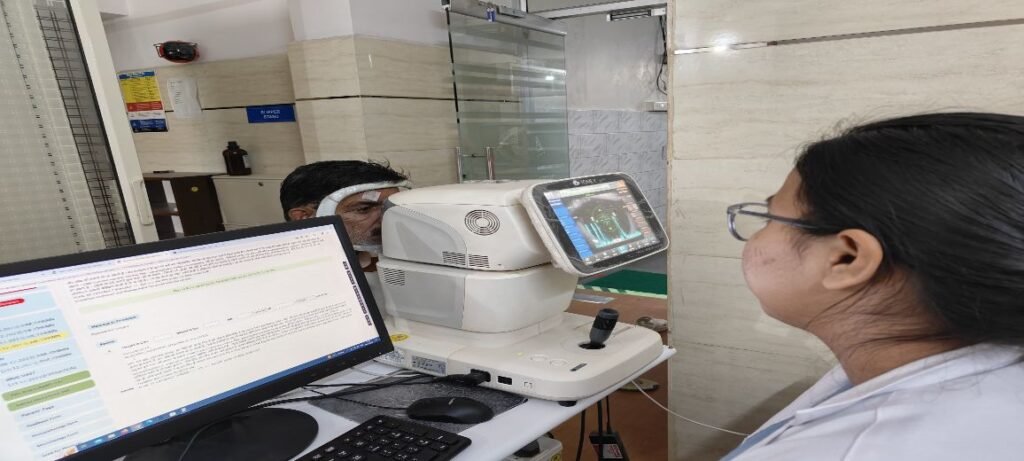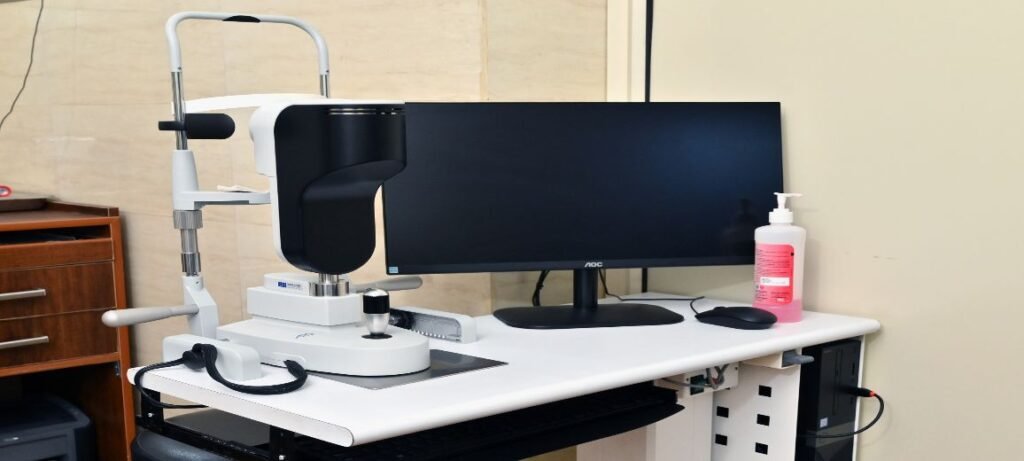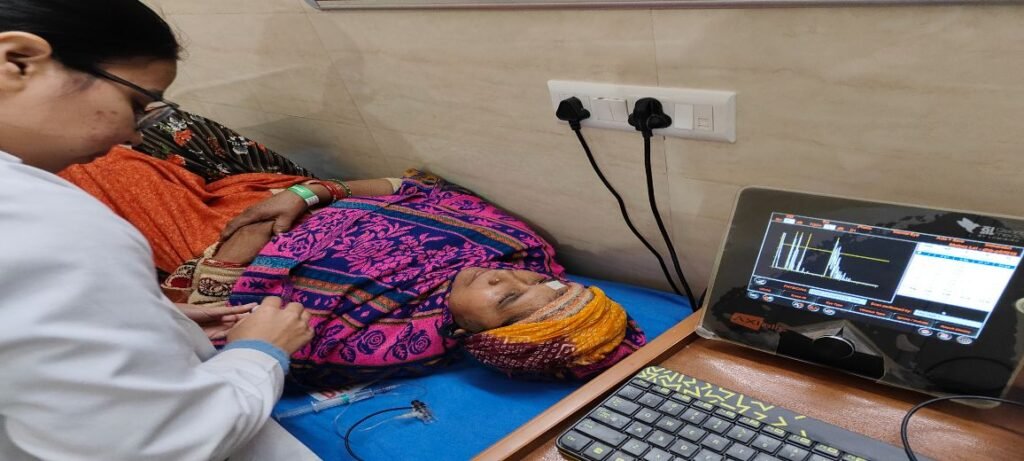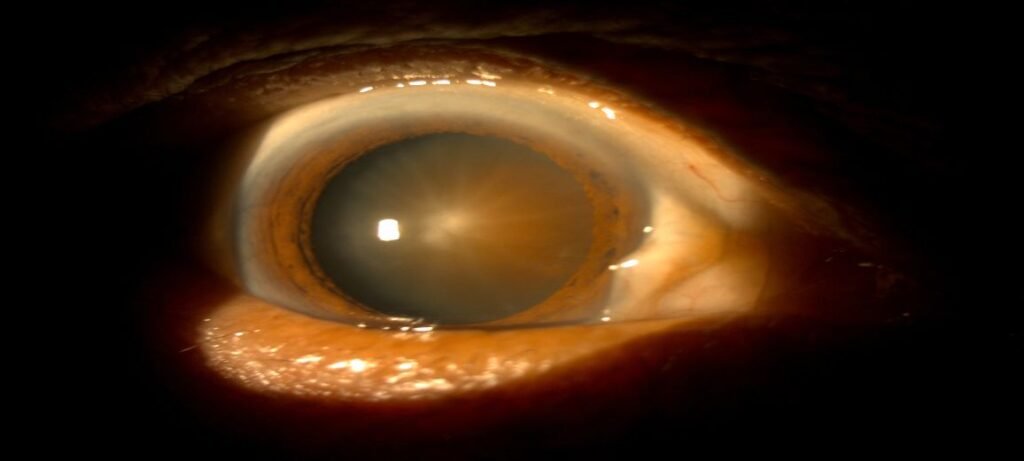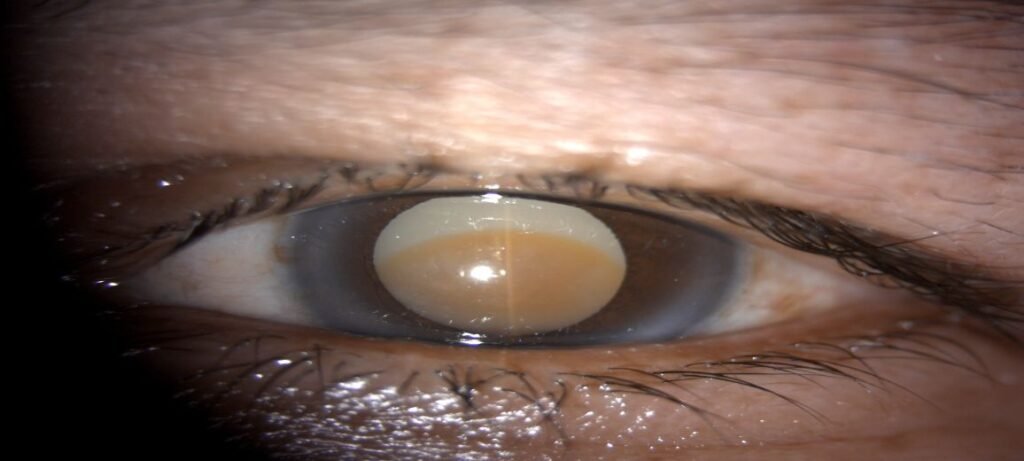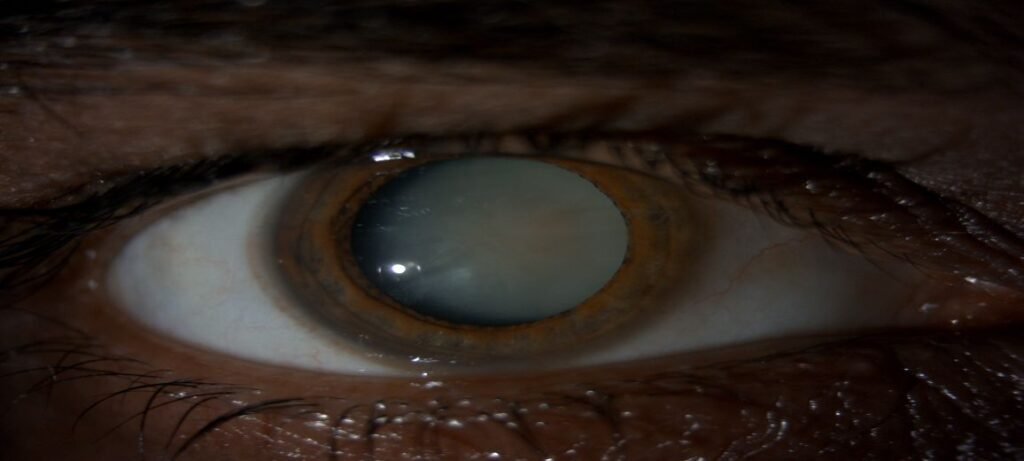Cataract & Anterior Segment
Dhir Hospital in Bhiwani, Haryana, boasts experienced cataract surgeons with decades of expertise. We provide all types of lenses and cataract prescriptions.
- Home
- Service
- Cataract & Anterior Segment
Overview
Cataract removal surgery is a standard procedure performed by a cataract specialist in Bhiwani, focusing on the anterior segment of the eye. This surgery involves removing the cloudy lens affected by a cataract and replacing it with an artificial lens. The specialist, an ophthalmologist, ensures the surgery is done in the outpatient setting, making it a familiar and safe process to improve vision.
Why it's done
Cataract removal surgery is done to fix cataracts, which can blur your vision and make lights seem too bright. If cataracts make it hard for you to do your usual activities, like reading or driving, your healthcare team might recommend this surgery.
Sometimes, cataracts can make it tricky for eye doctors to treat other eye issues. For instance, if you have problems like age-related macular degeneration or diabetic retinopathy, cataract surgery might be suggested to help doctors better see the back of your eye.
You don’t have to rush into cataract-removal surgery. Waiting won’t harm your eye, and you can take your time to decide. If your vision is still okay, you might not need the surgery for a long time.
When thinking about cataract surgery, ask yourself:
- Can you see well enough for your job and driving?
- Do you need help reading, watching TV, cooking, or daily tasks?
- Is your independence affected by vision problems?
- Do bright lights make it hard for you to see?
Risks
Complications after cataract surgery are uncommon, and most can be fixed successfully.
Some risks of cataract surgery are:
- Swelling
- Infection
- Bleeding
- Drooping eyelid
- Artificial lens moving
- Retina moving out of place (retinal detachment)
- Glaucoma
- Secondary cataract
- Loss of vision
A cataract specialist in Bhiwani can help you with cataract removal surgery, a standard procedure to improve vision affected by cataracts. This surgery replaces the cloudy lens with an artificial one, enhancing eyesight.
If you’re considering cataract treatment without surgery, it’s essential to consult with a cataract specialist in Bhiwani. They can discuss alternative options or determine if surgery is necessary for your case. While surgery is a common and effective solution, exploring the available treatments with your specialist ensures personalized care for your eye health.
How you Prepare
Food and Medications
Before cataract surgery, you should prepare by not eating or drinking anything for 12 hours. Your eye doctor could also ask you to stop taking certain medicines that might increase bleeding risk during the procedure, especially if you take medications for prostate problems.You might get antibiotic eye drops a day or two before the surgery.
Other Precautions
After the surgery, you’ll likely go home the same day, but you won’t be able to drive. So, make sure to arrange for someone to give you a ride. Also, plan for help around your home because your eye doctor may suggest avoiding certain activities like bending and lifting for about a week after the surgery.
What you can expect
Before the procedure
Before cataract surgery, your eye doctor will do a painless ultrasound test about a week before. This test helps determine the correct lens implant type, an intraocular lens (IOL).
Almost everyone who has cataract surgery gets IOLs. These are like permanent glasses inside your eye that improve your vision by focusing light at the back of your eye. You can’t see or feel these lenses, and they become a part of your eye without needing special care.
Different types of IOLs are made of materials like plastic, acrylic, or silicone. Some block ultraviolet light, while others are rigid and need stitches to close the incision. However, many IOLs are flexible, allowing for a smaller incision with few or no stitches. The surgeon folds this lens into the empty capsule where your natural lens used to be. Once inside your eye, the folded IOL unfolds, filling the empty capsule.
There are different types of IOLs, including:
- Fixed-focus mono-focal: Helps see things far away. You might still need reading glasses for up-close tasks.
- Accommodating-focus mono-focal: This can adjust your eye muscle movements, helping you see both near and far.
- Multifocal: Has different areas for close, medium, and far vision, similar to glasses with bifocal or progressive lenses.
- Astigmatism correction (toric): Helps correct your vision if you have a significant astigmatism.
Talk to your eye surgeon about the pros and cons of each type of IOL to decide which one is best for you.
During the Procedure
Cataract surgery is usually done in a short time, about an hour or less, and you can go home the same day.
First, your eye doctor puts eye drops to make your pupil bigger. They also give you medicines to numb the area and might give you a relaxing medicine called a sedative. You might be awake but groggy during the surgery if you have a sedative.
The cloudy lens (cataract) is removed in the surgery, and a clear artificial lens is usually put in. Sometimes, the cataract is removed without putting in an artificial lens.
There are two ways to remove cataracts:
- Phacoemulsification: A tiny incision is made in the front part of your eye (cornea). A thin probe with ultrasound waves breaks up the cataract, and the pieces are suctioned. Stitches may be used to close the small incision.
- Extracapsular cataract extraction: A more extensive incision is made in your eye. Tools are used to remove the front part of the lens and the cloudy lens in one piece. Stitches are needed with this method. This is done if there are specific eye problems.
After removing the cataract, an artificial lens is put into the empty capsule where your natural lens used to be. The goal is to improve your vision.
After the Procedure
After cataract surgery, your vision should improve in a few days, although it might be a bit blurry initially. Before surgery, a cataract makes colors look dull, but after the surgery, things may seem brighter because you have a new, clear lens.
You’ll visit your eye doctor a day or two after the surgery, then again the following week, and once more after about a month to check how well your eye is healing.
Feeling a bit itchy or uncomfortable for a couple of days after surgery is routine. Try not to rub or push on your eye. Your doctor might ask you to wear an eye patch or protective shield on the day of the surgery and for a few days afterward, especially when sleeping.
You might get prescribed eye drops or other medicines to prevent infection, reduce swelling, and control eye pressure. Sometimes, these medicines are given as injections during surgery.
After a few days, most of the discomfort should go away, and complete healing often takes about eight weeks.
Contact your doctor right away if you notice:
- Vision loss
- Persistent pain, even with nonprescription pain medicine
- More redness in your eye
- Swelling of the eyelid
- Light flashes or new spots (floaters) in front of your eye
Many people still need glasses, at least some of the time, after cataract surgery. Your doctor will tell you when your eyes have healed enough to get a final prescription for glasses, usually between one and three months after surgery.
If both eyes have cataracts, the second surgery is usually scheduled after the first eye has healed.
Results
However, some individuals may experience a secondary cataract, medically known as posterior capsule opacification (PCO). PCO occurs when the back of the lens capsule, the part that was not removed during the initial surgery and now holds the lens implant, becomes cloudy and affects vision.
Fortunately, PCO can be addressed with a quick and painless outpatient procedure called YAG laser capsulotomy. This five-minute procedure uses a laser beam to create a small cloud capsule opening, allowing light to pass through clearly.
After the YAG laser capsulotomy, you usually stay in the doctor’s office for about an hour to maintain eye pressure. While rare, potential complications may include retinal detachment, where the retina moves out of place.
Our Related Services

Cornea
At Dhir Hospital, we have a dedicated team of cornea specialists committed to provide you with the best possible care to protect your vision.
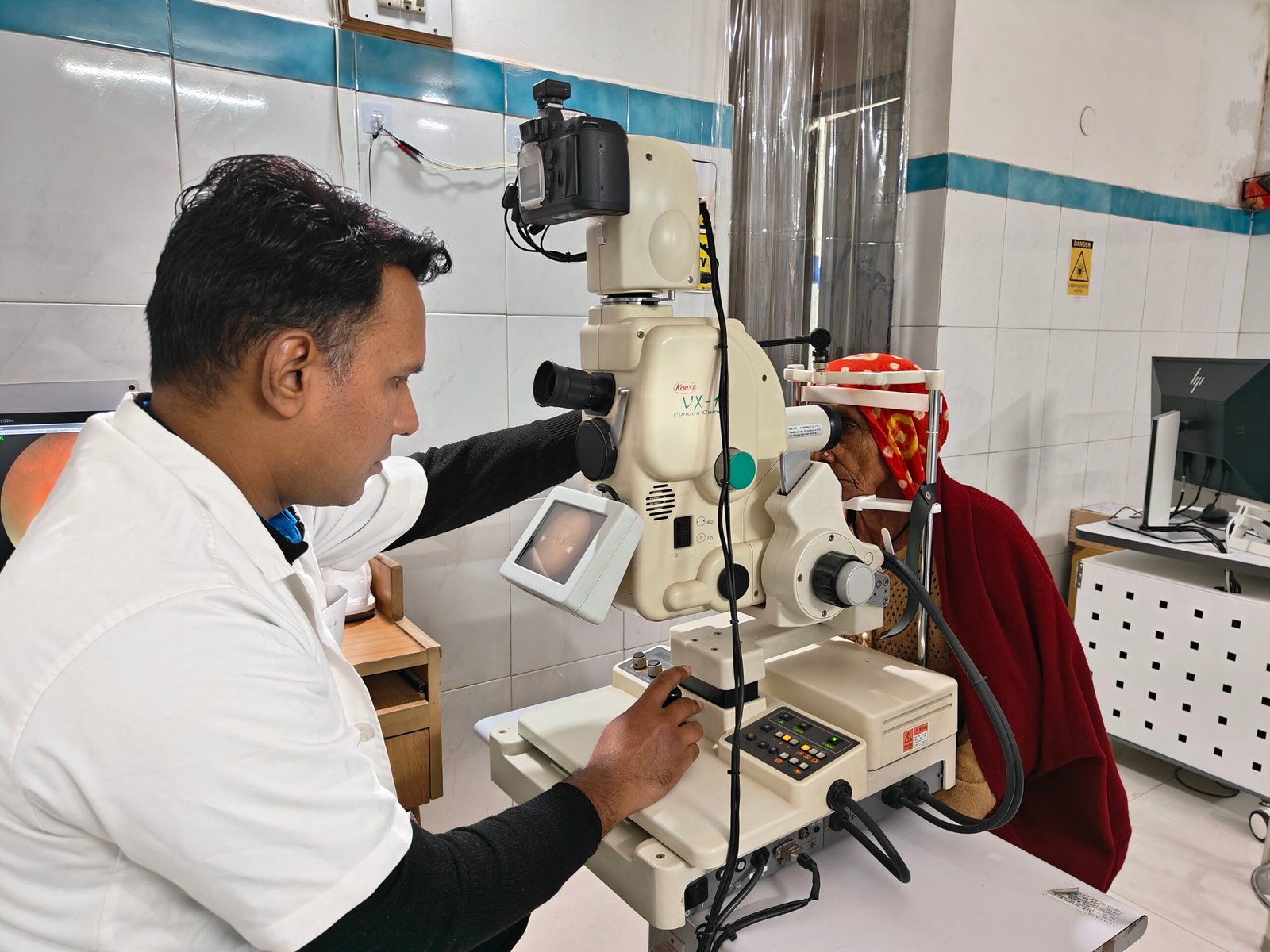
Retina & ROP
At Dhir Hospital, we provide the best Retina & ROP Treatment in Bhiwani, Haryana with experienced Retina Surgeons.
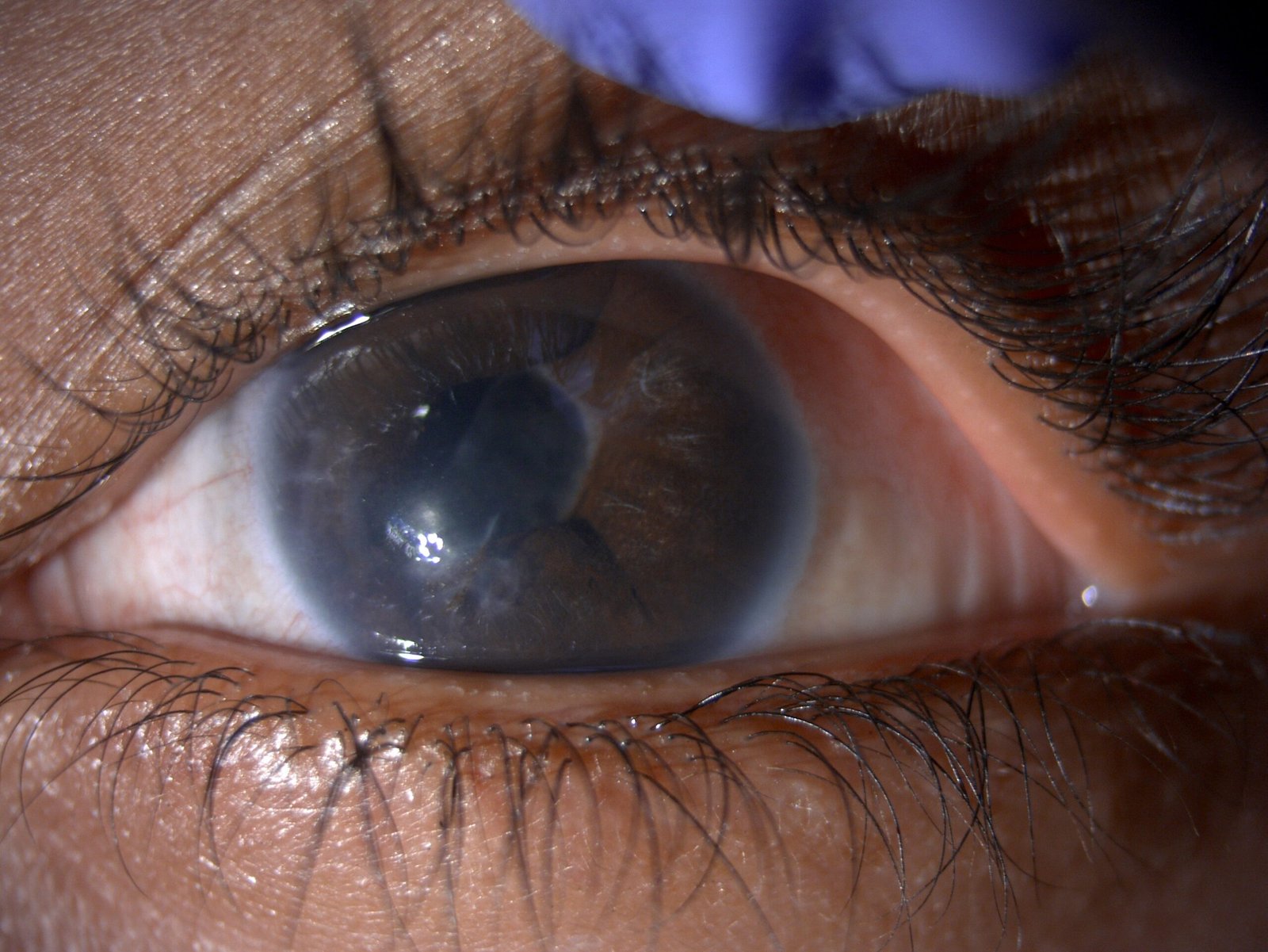
Glaucoma
At Dhir Hospital, we provide the best Glaucoma Treatment in Bhiwani, Haryana with experienced Glaucoma Surgeons.

UVEITIS
At Dhir Hospital , we are committed to providing our uveitis patients with advanced quality eye care at affordable prices.
FAQ
Frequently Ask Questions.
Cataracts can develop due to various factors, and understanding the causes can help identify potential risk factors. Here are some common causes of cataracts:
- Age: Age-related cataracts are the most common type and occur as a natural part of the aging process. Over time, the proteins in the lens of the eye can clump together, leading to cloudiness and vision problems.
- Genetics: Certain genetic factors can increase the likelihood of developing cataracts. If you have a family history of cataracts, you may be more prone to developing them as well.
- UV radiation: Prolonged exposure to ultraviolet (UV) radiation from the sun can contribute to the development of cataracts. Wearing sunglasses with UV protection and a wide-brimmed hat can help reduce this risk.
- Diabetes: Individuals with diabetes are at a higher risk of developing cataracts, likely due to changes in blood sugar levels affecting the lens of the eye.
- Trauma or injury: Eye injuries or trauma, such as a blow to the eye, can cause cataracts to form. In some cases, cataracts may develop immediately after the injury, while in others, they may appear months or years later.
- Medications: Prolonged use of certain medications, such as corticosteroids or medications used to treat conditions like psoriasis or rheumatoid arthritis, can increase the risk of cataracts.
- Smoking and alcohol consumption: Smoking and excessive alcohol consumption have been linked to an increased risk of cataracts.
Other health conditions: Certain health conditions, such as hypertension, obesity, or previous eye surgeries, may also increase the likelihood of cataract development.
At Dhir Hospital in Bhiwani, Haryana, we offer the best facilities and advanced techniques for cataract removal, ensuring safe and effective treatment for our patients. Cataract removal process at our hospital:
- Comprehensive evaluation: Our experienced ophthalmologists conduct a thorough examination to assess the severity of your cataract and determine the most suitable treatment plan. We take into consideration your specific needs and lifestyle to customize the approach.
- Patient comfort and safety: Before the surgery, our dedicated team ensures your comfort by providing appropriate anesthesia. We prioritize patient safety throughout the procedure, employing advanced monitoring systems and adhering to strict sterilization protocols.
- Micro-incision phacoemulsification: We specialize in the latest technique called micro-incision phacoemulsification. This minimally invasive procedure involves making a tiny incision, typically less than 2.8 millimeters, through which an ultrasound probe is used to break up and remove the cataract. The small incision promotes faster healing and reduces the risk of complications.
- Advanced intraocular lenses (IOLs): After removing the cataract, we carefully select and insert an advanced intraocular lens (IOL) that best suits your vision needs. Dhir Hospital offers a wide range of premium IOL options, including multifocal, toric, and accommodating lenses, allowing for improved vision at various distances and addressing astigmatism.
- Post-operative care: Our specialized team provides comprehensive post-operative care to ensure successful healing and optimal visual outcomes. We guide you through the use of prescribed eye drops and provide detailed instructions on activities and precautions during the recovery period.
At Dhir Hospital, we prioritize patient satisfaction and strive to deliver excellent results. Our skilled ophthalmologists and dedicated staff are committed to providing personalized care, addressing any concerns you may have, and making your cataract removal experience as comfortable and successful as possible.
At Dhir Hospital in Bhiwani, Haryanal, we offer several surgical techniques for cataract removal, ensuring that our patients receive the most appropriate and effective treatment for their specific needs. Some of the surgical techniques available at our hospital:
- Phacoemulsification: Phacoemulsification is the most common and advanced technique for cataract removal. It involves making a small incision in the cornea and using an ultrasonic device to break up the cloudy lens into tiny fragments. The fragments are then gently suctioned out of the eye. This technique is known for its precision, minimal incision size, and fast recovery time.
- Femtosecond Laser-Assisted Cataract Surgery (FLACS): FLACS is a technique that utilizes a femtosecond laser to perform some of the steps in cataract surgery. The laser assists in creating precise incisions, capsulotomy (opening in the front of the lens capsule), and fragmenting the cataract. This technology enhances surgical accuracy and can be particularly beneficial in complex or challenging cases.
- Manual Small-Incision Cataract Surgery (MSICS): MSICS is a technique used in cases where phacoemulsification may not be suitable, such as advanced or dense cataracts. It involves making a slightly larger incision (around 6-7 millimeters) to manually remove the cataract. Despite the larger incision, the recovery time is still relatively quick.
- Intracapsular Cataract Extraction (ICCE): ICCE is an older technique that involves removing the entire lens, including the lens capsule. This technique is rarely used today, as it has been largely replaced by more advanced and less invasive methods.
At Dhir Hospital, our experienced ophthalmologists assess each patient's condition and determine the most appropriate surgical technique based on factors such as the severity of the cataract, overall eye health, and individual patient factors. We prioritize safety, precision, and optimal outcomes in every cataract surgery we perform.



